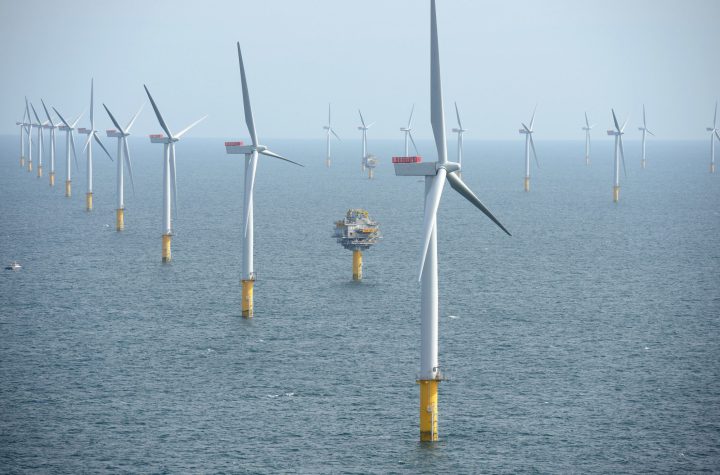Generation X: Standing by your Mains
What has electricity generation got to do with music?
By Matt Finch
Share
Last updated:
There are, of course, several unanswered questions that could arise following its implementation alongside carbon trading, which is also due to go nationwide next year:
- Would carbon permits and consumption permits be interchangeable, considering the similarity of their goals?
- How would the contribution of behind-the-meter renewables be accurately monitored?
- Would an arbitrage opportunity open between the two markets, prompting the return of banks and trading houses to carbon markets?
- If one scheme becomes more effective than the other and changes market dynamics in the latter, would this be managed through regulation?
None of these can really be answered before the system is up and running.
Other countries are increasingly moving to implement unilateral action on emissions, through market mechanisms and regulations. For example, France is considering imposing a carbon floor price of €20-30 (£17-26) per tonne by 2020, increasing to more than €50 (£43) per tonne by 2030. Environmental ministers around the globe will likely be keeping an eye on China’s plans for this new market, potentially seeing it as an opportunity to boost energy efficiency should it be successful.
If imposed on a blanket scale, with no industries unfairly insulated or sheltered from the cost of permits, UK companies would be encouraged to boost their energy efficiency. While there are arguments against unilateral action of this sort – harming international competitiveness, for example – a new system could be introduced gradually, slowly restricting the number of available permits over several years to avoid any more unneeded sharp shocks to the economy.
Depending on the success of the scheme in China, implementing something similar in the UK could build on previous world-leading progress on energy and emission regulation. With the UK facing unsteady waters, increasing efficiency could provide a welcome jump start on the global movement toward decarbonisation.

Renewables are set to expand, while coal generation is contracting (and gas will too). In July and August the UK got more power from solar panels alone than from coal. Tuesday 10 May will go down in history as the day the UK didn’t use coal to keep the lights on for the first time since 1882.
In the first quarter of 2016 (ie the cold, dark months), renewables generated 25% of all electricity produced, up 2.3% on the previous year. Add this to the fact that 19GW of new nuclear plants could be built by 2030, also producing near-zero marginal cost electricity, AND recall the plan is to drive coal off the system by 2025, and you start to see that zero marginal cost electricity will dominate in the not too distant future.
This has a strange economic effect: the wholesale price doesn’t just drop towards zero, it can go negative, and has done so a total of (at least) 81 times so far this year. At these times, renewables are producing more juice than there is demand.
But unfortunately most of us can’t buy from the wholesale market; we’re stuck in the consumer market, where wholesale costs only make up 40% of the average electricity bill. Network costs are about 25%, with environmental and social levies about 13%. The rest is operating costs, VAT and profits.

So sadly, negative wholesale prices will never equate to ‘money for nothing’ on the consumer side. But what they do mean for bills is that undeniably, as Sam Cooke would have put it, ‘A Change Is Gonna Come’.
Grid Level Storage
For instance, what happens if (when) you then add a large amount of grid-level utility storage? The marginal cost of providing electricity from storage is also virtually zero. And with enough storage, we can store excess renewably- or nuclear-generated electrons for the evening-time peak demand period. Negative pricing becomes a thing of the past as storage soaks up excess generation and releases it when needed. This will spread zero-marginal cost power further across the day.
There are currently 24 operational storage sites in the UK. Together they only equal a measly 24MW capacity, but, according to consultancy firm Eunomia, by 2020 - just 3 ½ years away - there could be at least 1.6GW of storage capacity up and running (although some of this will be in households or businesses.)
Now, of course building renewable and nuclear capacity incurs its own charges; we commit, mainly through Contracts for Difference (CfDs), to rewarding generators for the up-front build costs for the first 15 years of a wind farm’s life (or 35 years, in the case of Hinkley Point C). As anyone who’s followed the Hinkley saga will know, this can amount to a lot of money.
But two things jump out: firstly, CfDs make bills predictable, rather than being subject to the vagaries of international gas prices – and secondly, they’ll decline, because once a wind or solar farm has generated for the 15 years of its CfD contract, it’s then selling power simply at the wholesale price.
So an investment in all this stuff now – including storage – will inevitably lead to smaller and more predictable costs in future. Effectively, we’re swapping a system based on small capital costs and substantial, unpredictable fuel costs for one based on predictable levies for building the stuff and negligible running costs.
So: How will electricity be priced in the future?
Well – here comes, as Grandmaster Melle Mel and the Furious Five might put it, ‘The Truth’. (Or we can go for ‘The Gospel According to Spinal Tap’, if you prefer).
Music!
The music industry went through a period of rapid change. In what now seems like prehistory, you bought vinyl, tapes or CDs. They cost money to make, so you paid some cash and got Now That’s What I Call Music XX (insert your generation’s number here).

Then digital arrived. All of a sudden the marginal cost of selling one more song fell to zero, and prices plummeted (and music piracy became mainstream).
The music industry was slow to react. It tried to make people pay for downloads, but that didn’t really work. Instead, paid subscription services - Spotify, Tidal, Apple Music and the like - have become the norm (2015 was the first year that more was spent on subscriptions than downloads).
Obviously electricity is not music, but it’s a utility – as are water, sewerage, electricity, gas and, most recently, broadband.
These share common characteristics, but the main one is that we, as consumers, don’t really care how ‘it’ gets to us, just that ‘it’ does with absolutely no interruption of supply. Another is that the price of a litre, cubic metre or byte is negligible compared with the cost of implementing, maintaining and upgrading the associated infrastructure.
With significant renewables and storage on the grid, the price of an electron falls into this category.
Water, sewerage and broadband have effectively a subscription-based pricing model - most people pay the same monthly (banded) fee, no matter how much they use. But as a nation, we also don’t want to waste water, burn electricity or clog up the information superhighway unnecessarily, so some form of fair-use policy is needed. And what’s a good way of keeping usage down? Financial penalties, such as the charges your broadband provider will levy if you go over your monthly gigabyte allowance.
All of a sudden, it becomes very easy to imagine a future electricity bill that for most people is 100% standing charge, with a whopping massive penalty charge if you use too much. A bit like the music industry has become.
Not quite ‘No Charge’, then. But most definitely ‘On the Regular’. And there will be absolutely ‘No Looking Back’ – ‘You Better Believe It’.
Share